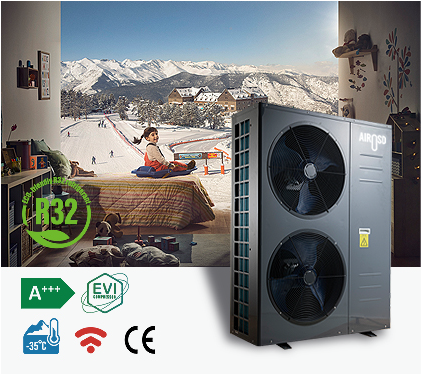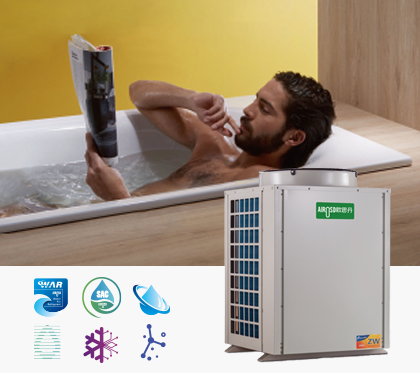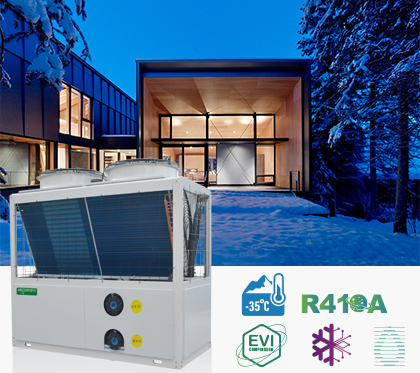Geothermal heat pumps are a fascinating technology that harnesses the natural heat stored within the Earth to provide efficient heating and cooling for homes and buildings. Unlike traditional heating and cooling systems that rely on fossil fuels or electricity, geothermal heat pumps utilize the Earth's stable underground temperatures to provide sustainable and cost-effective thermal comfort. Let's delve deeper into this innovative technology and explore the benefits it offers.
What Is Geothermal Heat Exchange?
Geothermal heat pumps work on the principle of geothermal heat exchange. The Earth's crust maintains a relatively constant temperature below the surface, typically around 50 to 60 degrees Fahrenheit (10 to 15 degrees Celsius). This temperature is greater than the winter air temperature and lower than the summer air temperature. Depending on the season, geothermal heat pumps use this temperature differential to extract or deposit heat.

Ground Source Heat Pump Manufacturers
The Components Of A Geothermal Heat Pump System
A geothermal heat pump system consists of three primary components, including the heat pump unit, the ground loop system, and the air delivery system.
Heat Pump Unit
The heat pump unit is the heart of the system and is typically located indoors. It consists of a compressor, a heat exchanger, a refrigerant, and various valves and controls. The compressor is in charge of moving the refrigerant throughout the system.
Ground Loop System
The ground loop system is made up of a network of underground pipes that are either horizontally in trenches or vertically in boreholes. These pipes are filled with a heat transfer fluid, often a water-antifreeze combination, which circulates around the loops. The ground loop system acts as a heat exchanger, transferring heat between the Earth and the heat pump unit.

Air Delivery System
The air delivery system distributes the conditioned air throughout the building. It typically consists of air ducts, vents, and fans that circulate the air.
Heating Mode Operation
During the heating mode, the geothermal heat pump extracts heat from the Earth through the ground loop system. The heat transfer fluid absorbs the Earth's heat and carries it to the heat pump unit. Inside the heat pump, the refrigerant absorbs the heat from the fluid and evaporates, transforming it into a gas. The gas is subsequently pressurized by the compressor, boosting its temperature even higher. The heated refrigerant gas passes via a heat exchanger, transferring its heat to the air and moving through the air delivery system. The heated air is then circulated throughout the structure, giving warmth.
Cooling Mode Operation
During the cooling mode, the process is reversed. The heat pump extracts heat from the indoor air and transfers it to the Earth through the ground loop system. The refrigerant takes heat from the interior air and evaporates it. The compressor then increases the temperature of the refrigerant gas by pressurizing it. The heated gas condenses back into a liquid after releasing its heat to the ground loop system. The cool air is then distributed throughout the building, providing a refreshing and comfortable environment.
Advantages Of Geothermal Heat Pumps
Geothermal heat pumps offer numerous advantages, making them an attractive choice for both residential and commercial applications.
1. Energy Efficiency
Geothermal heat pumps are highly energy-efficient as they rely on the Earth's natural heat, which is a renewable energy source. They require less electricity to operate compared to traditional heating and cooling systems, resulting in significant energy savings.
2. Environmentally Friendly
By using the Earth's natural heat, geothermal heat pumps produce minimal greenhouse gas emissions, reducing their environmental impact. They contribute to a cleaner and more sustainable planet.
3. Cost Savings
Although the initial installation costs of geothermal heat pumps can be higher, the long-term savings on energy bills often outweigh the initial investment. Additionally, many governments offer incentives and tax credits to promote the adoption of renewable energy solutions.
4. Durability And Low Maintenance
Geothermal heat pump systems have fewer moving parts, which means they require less maintenance and have a longer lifespan compared to traditional HVAC systems.

Geothermal Heat Pump Suppliers
Considerations Before Installing A Geothermal Heat Pump
Before deciding to install a geothermal heat pump system, there are a few essential factors to consider:
1. Site Suitability
Geological surveys should be conducted to determine if the site is suitable for a geothermal heat pump system. Factors such as soil type, land area, and access to groundwater or wells can impact system efficiency.
2. System Size
The size of the heat pump system should be appropriately calculated based on the building's heating and cooling demands. An oversized or undersized system can lead to inefficiencies and increased costs.
3. Installation Costs And Payback Period
Although geothermal heat pump systems offer long-term cost savings, it's essential to assess the initial installation costs and estimate the payback period.
Conclusion
Geothermal heat pumps are an innovative and sustainable solution for heating and cooling buildings. If you are looking for a geothermal heat pump, AIROSD is your great choice. We are one of the famous geothermal heat pump manufacturers in China, offering high-quality geothermal heat pumps. If you are interested in it, contact us by clicking it.



